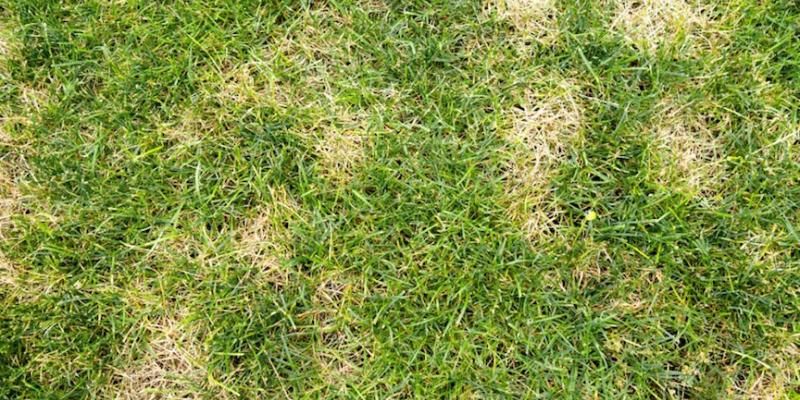Why Is My Lawn Turning Brown?

The grass isn’t always greener on the other side - sometimes it’s brown! Are you experiencing browning grass? There are a number of factors that may be contributing to the decline of your lawn.
Lawn Disease
There is a myriad of ailments that may have your lawn feeling blue and looking brown. The majority of lawn diseases are most prevalent in wet, damp, and humid weather. These various diseases create different patterns of browning in your grass so it may be difficult to determine which one you are dealing with, and as such it is hard to figure out how to fix it. Dollar spot, brown patch, red thread, summer patch are all typical diseases that may be easily confused for one another.
Unwelcome Pests
Furthermore, insects may be using your lawn as an all you can eat buffet. There are various different tiny terrors who may be attacking your blades. Chinch bugs and grubs are all frequent offenders.
Say Goodbye to Weeds
Weeds are also a common culprit behind a browning lawn. These include plants like crabgrass, clover, ground ivy, wild violet, and dandelions. They deprive your grass of the water and nutrients it needs to thrive so it is important to be vigilant against their growth. There are different treatment methods for each different type of weed but typically they can be dug up or attacked with specialized products. These products include herbicides that may be used as preventative measures and others that can be implemented after the weeds sprout.
Your Lawn is Thirsty
One of the most obvious reasons your grass has lost its vivid color may be drought during an excessively dry time of the year. There are many ways to determine if your lawn is suffering from this issue. If the grass is brown in splotches, if the grass is firmly rooted when pulled, and if footprints can be clearly seen, you are probably dealing with this issue. The soil is the main problem in this situation because it is dry and is not providing for the grass.
Sprinkler Strategy
Of course, the easiest resolution would be to increase water consumption. Watering for longer periods of time, fewer times per week is more beneficial than shorter periods every day. It is best to do this in the early morning to avoid evaporation or fungal growth. Additionally, sprinkler location is critical to the even development of an abundant lawn, so be sure that the spray reaches every part of the yard.
Dormancy is Normal
On the other hand, if you’re rationing water have no fear, your lawn will most likely recover on its own when the rain returns. Your lawn has probably gone dormant in order to protect itself, once the water supply returns it typically takes a few weeks to be restored to its previous lush green color. Dormancy typically occurs during dry, very hot summers but with proper care and hydration, your lawn should spring back to life in no time.
What You Can Do
Ultimately the best option, when you can’t fix a browning lawn, is to call the professionals. At Lawn Tech, we will be able to determine the root of the problem and can formulate an action plan to combat it. Our lawn care technicians have specialized knowledge about various insects, lawn diseases, and the importance of proper upkeep. Additionally, we can determine what sort of aeration, seeding, mowing techniques, and other practices are best for your particular environment. Lawn Tech can provide the most effective strategies for keeping your lawn green and healthy.

